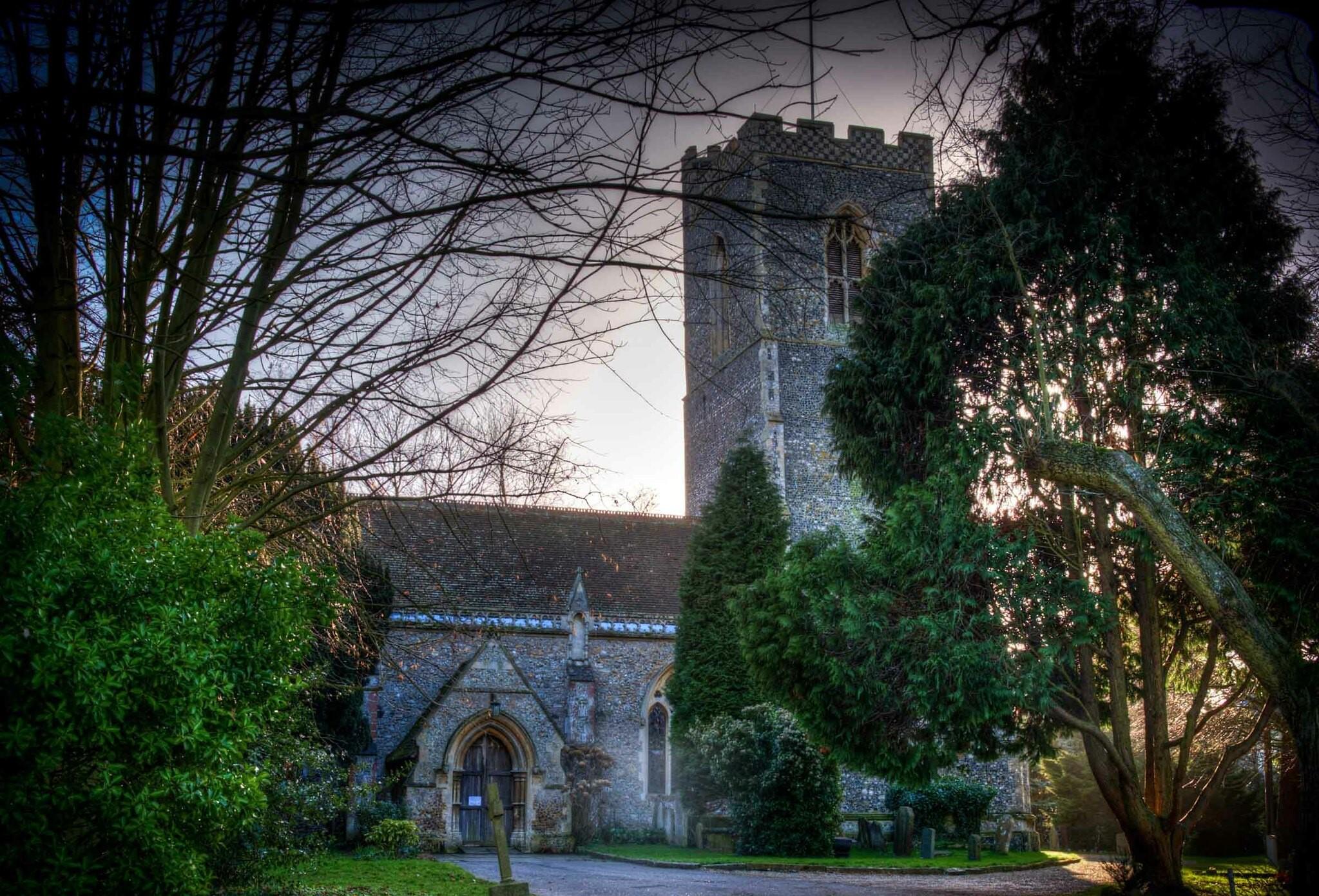St Michael
Thorpe le Soken, Essex
A traditional village church that welcomes all.

St. Michael’s is the parish church serving both Kirby le Soken and Kirby Cross. It stands back from the main road through Kirby le Soken at the end of a driveway.
Kirby le Soken, Essex
Little of the 14th and 15th century medieval church of St Michael remains except the tower, parts of the chancel and the 15th century headstops on either side of the north door, because in 1833 it was rebuilt. Much of the 1833 rebuilding was altered by Mr Henry Stone in 1870 and 1872 who removed the gallery and replaced it with a large window at the west end, constructed the north aisle and rebuilt the chancel.
The church building is constructed of stone, flint, septaria and stone dressings. The nave and chancel roofs are plain red tiles.
The porch dates from 1872 and is gabled and buttressed and contains double vertically boarded doors, one set with ornate hinges. Immediately inside the porch, is the north aisle. It contains a fine 'lona' window at the east end. This window is 14th century with modern glass depicting St Cedd. The pulpit replaces the original portland stone pulpit which was installed during the renovation of 1833. The present oak pulpit was given to the church in 1952 and the stone one removed. The chancel now occupied by choir pews, is 14th century and on the north wall is to be seen the remains of a doorway that was once possibly the 'Priest's Door'. The door is flanked by two windows. The Sanctuary contains modern oak panelling and a piscina of the 14th century. Behind the modern table, installed in 1950, the wall is covered with Victorian tiles. The window on the South side of the sanctuary was dedicated in 1979 in memory of the Revd John Thomas, vicar of the parish from 1940-72. The 14th century arch over the organ possibly led into a 'Lady Chapel' long since destroyed. The Organ was rebuilt by Cedric Arnold of Thaxted in 1959. It was built by Cartwright and Co of London and dedicated in 1911.
The south aisle contains windows depicting the nativity, St Michael defeating the dragon surrounded by the Arms of the dioceses in which this parish has been placed from time to time, a window in praise of 'outdoor labours and simple home domesticity', a window remembering those who lost their lives in the first and second world wars, there is also memorial to a past incumbent and a benefactors board. The west window of this south aisle shows a figure of St Francis.
The oak doors and the plate glass screen separating the nave from the tower vestry were installed in 1967. The tower contains the west window and the tower itself is of the fifteenth century and is in three stages with an embattled parapet of chequer work. The tower was built with two skins with an infill of rubble. Over the years the tower has been much repaired. The bells. eight in number, vary from one by Miles Graye of 1641 to the Treble and Second by Alfred Bowell in 1926.
The octagonal font which together with the pillars and arches of the nave were renewed or repaired in 1833, they faithfully retain the style and decoration of the 14th century, including the typical ball flower decoration. The parish chest which is original has three locks. The interior is subdivided into two sections and the lid is divided in line with these sections. At one time all the parish records were kept in the chest but about 10 years ago the records were all sent to the Essex County Record office.
The churchyard is large, and includes 4 official war graves. The well used church hall is at the bottom of the drive and next to the road.
Thorpe le Soken, Essex
A traditional village church that welcomes all.
Harwich, Essex
The port of Harwich is a must see destination for history lovers as it is the place where the Mayflower ship is believed to have been built and where its captain, Christopher Jones lived and was twice wed at St Nicholas church, which was rebuilt 1821.
Great Bromley, Essex
A 15th century church of great architectural interest with exceptional flint flushwork, magnificent double hammer-beam roof with original colouring, wealth of furnishings 1850-1930 and ‘River of Life’ reredos 2014.